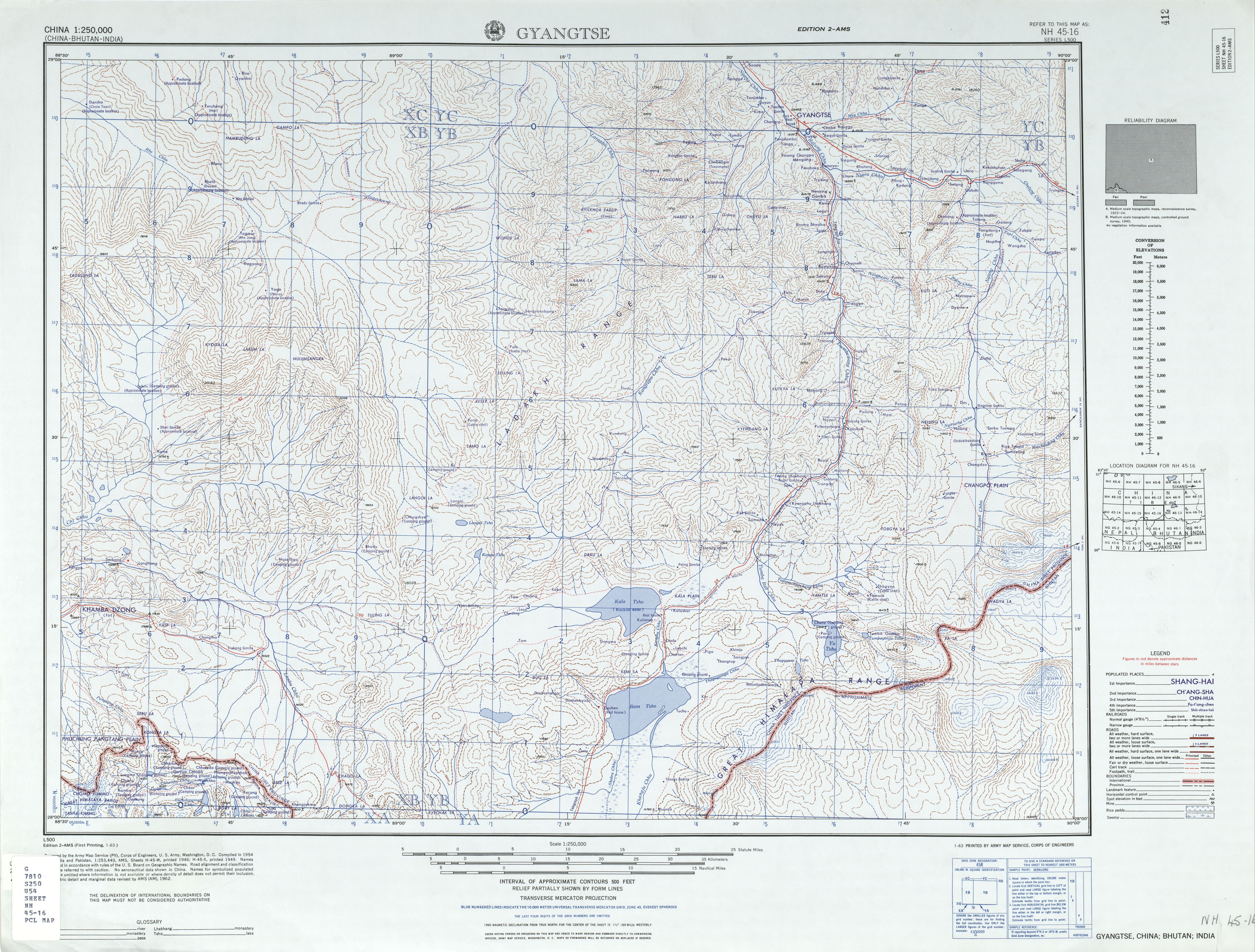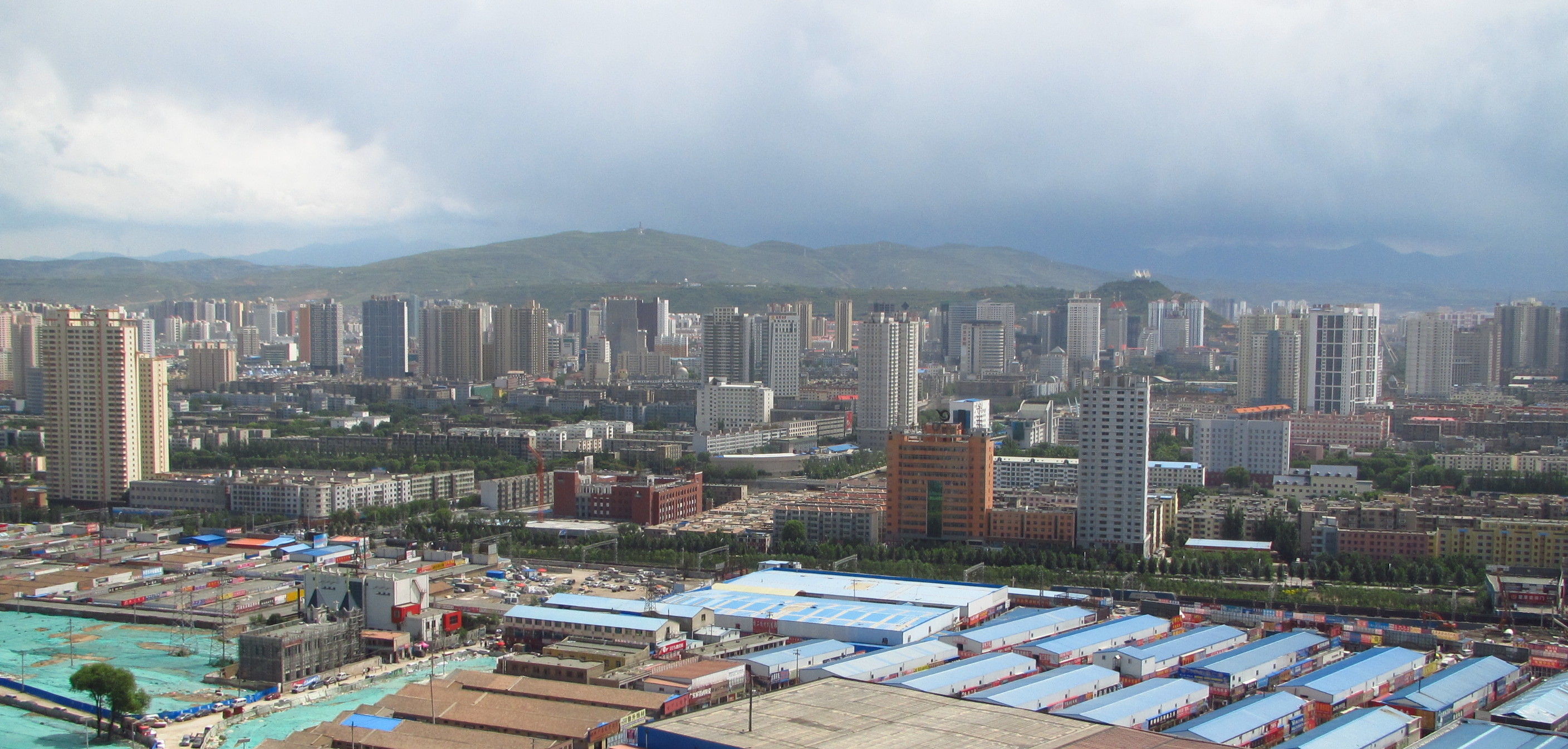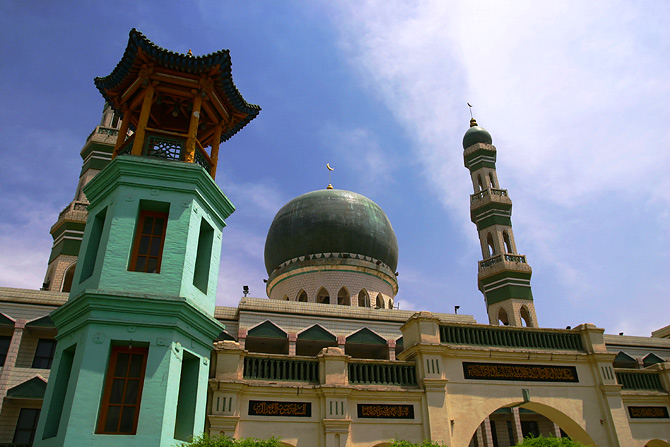|
Kumbum
A Kumbum ( "one hundred thousand holy images") is a multi-storied aggregate of Buddhist chapels in Tibetan Buddhism. The most famous Kumbum forms part of Palcho Monastery. The first Kumbum was founded in the fire sheep year 1427 by a Gyantse prince. It has nine ''lhakang''s or levels, is high surmounted by a golden dome, and contains 77 chapels which line its walls. Many of the statues were damaged during the Cultural Revolution but have since been replaced with clay images, though they lack the artistic merit of the originals. The 14th century murals showing Newar and Chinese influences, survived much better. The Kumbum or great ''gomang'' ("many-doored") stupa at Gyantse is a three-dimensional mandala meant to portray the Buddhist cosmos. The Kumbum, like other mandalas, which are portrayed by a circle within a square, enables the devotee to take part in the Buddhist perception of the universe and can depict one's potential as they move through it. Mandalas are meant to ... [...More Info...] [...Related Items...] OR: [Wikipedia] [Google] [Baidu] |
Kumbum Monastery
Kumbum Monastery (, THL Simplified Phonetic Transcription, THL ''Kumbum Jampa Ling''), also called Ta'er Temple, is a Tibetan gompa in Huangzhong County, Lusar, Xining, Qinghai, China. It was founded in 1583 in a narrow valley close to the village of Lusar in the historical Tibetan region of Amdo. Its superior monastery is Drepung Monastery, immediately to the west of Lhasa. It is ranked in importance as second only to Lhasa. Description Alexandra David-Néel, the famous Belgian-French explorer who spent more than two years studying and translating Tibetan books at the monastery, said of it: Origins: The Tree of Great Merit Je Tsongkhapa, the founder of the Gelug school of Tibetan Buddhism, was born in nearby Haidong, Tsongkha in 1357. According to one tradition, Tsongkhapa's father took the afterbirth and buried it where the monastery is now and soon a Santalum, sandalwood tree grew on the spot. Another version has it that the tree grew up where drops of blood from Tsongkha ... [...More Info...] [...Related Items...] OR: [Wikipedia] [Google] [Baidu] |
Kumbum Gyantse
A Kumbum ( "one hundred thousand holy images") is a multi-storied aggregate of Buddhist chapels in Tibetan Buddhism. The most famous Kumbum forms part of Palcho Monastery. The first Kumbum was founded in the Tibetan calendar#Years, fire sheep year 1427 by a Gyantse prince. It has nine ''lhakang''s or levels, is high surmounted by a golden dome, and contains 77 chapels which line its walls. Many of the statues were damaged during the Cultural Revolution but have since been replaced with clay images, though they lack the artistic merit of the originals. The 14th century murals showing Newar people, Newar and Chinese influences, survived much better. The Kumbum or great ''gomang'' ("many-doored") stupa at Gyantse is a three-dimensional mandala meant to portray the Buddhist cosmos. The Kumbum, like other mandalas, which are portrayed by a circle within a square, enables the devotee to take part in the Buddhist perception of the universe and can depict one's potential as they mov ... [...More Info...] [...Related Items...] OR: [Wikipedia] [Google] [Baidu] |
Palcho Monastery
The Palcho Monastery or Pelkor Chode Monastery or Shekar Gyantse is the main monastery in the Nyangchu river valley in Gyantse, Gyantse County, Shigatse Prefecture, Tibet Autonomous Region. The monastery precinct is a complex of structures that, apart from the Tsuklakhang Monastery, also includes its Kumbum, believed to be the largest such structure in Tibet,Neville-Hadley p.771 quote:the nine story Kumbum the largest chorten in Tibet. that is most notable for its 108 chapels in its several floors and the old Dzong or fort. History The earliest history of the Penchor Chode Monastery is traced to the ninth century. Pelkhor-tsen, son of Langdarma (anti Buddhist King of West Tibet) after whom the monastery is named as Pelkor Chode, lived here and attempted to perpetuate the Yarlung dynasty of his father who had been assassinated.Dorje p.156 The town of Gyantse was established between the 14th and 15th centuries as a feudatory, with the Sakya sect playing a crucial overlord role. ... [...More Info...] [...Related Items...] OR: [Wikipedia] [Google] [Baidu] |
Gyantse
Gyantse, officially Gyangzê Town (also spelled Gyangtse; ; ), is a town located in Gyantse County, Shigatse Prefecture, Tibet Autonomous Region, China. It was historically considered the third largest and most prominent town in Tibet (after Lhasa and Shigatse), but there are now at least ten larger Tibetan cities. History In 1904, the British expedition to Tibet reached Gyantse on 11 April. The town's garrison had already fled, and the expedition's members entered the town bloodlessly through the front gates, which were opened for them, and occupied Gyantse. After the town was occupied, several British officers visited the Palcho Monastery and seized several statues and scrolls. During the occupation, the town's inhabitants continued to go about their business, and the expedition's medical officer, Herbert James Walton, attended to their medical needs, including performing several operations to correct the common problem of cleft palates. The expedition's officers spent tim ... [...More Info...] [...Related Items...] OR: [Wikipedia] [Google] [Baidu] |
Xining
Xining is the Capital (political), capital and most populous city of Qinghai province in western China and the largest city on the Tibetan Plateau. As of the 2020 census, it had 2,467,965 inhabitants (2,208,708 as of 2010), of whom 1,954,795 lived in the built-up (or metro) area made of 5 urban districts. The city lies in the Huangshui River, Huangshui River Valley, also known as Tsongkha (Tibetan script, Tibetan: ཙོང་ཁ་), and owing to its high altitude, has a cool climate on the borderline between Semi-arid climate#Cold semi-arid climates, cool semi-arid and dry winter humid continental climate, humid continental. Xining was a commercial hub along the Northern Silk Road's Hexi Corridor for over 2000 years, and was a stronghold of the Han dynasty, Han, Sui dynasty, Sui, Tang dynasty, Tang, and Song dynasty, Song dynasties' resistance against nomadic attacks from the west. Although long a part of Gansu province, Xining was added to Qinghai in 1928. Xining holds sites ... [...More Info...] [...Related Items...] OR: [Wikipedia] [Google] [Baidu] |
Qinghai
Qinghai is an inland Provinces of China, province in Northwestern China. It is the largest provinces of China, province of China (excluding autonomous regions) by area and has the third smallest population. Its capital and largest city is Xining. Qinghai borders Gansu on the northeast, Xinjiang on the northwest, Sichuan on the southeast and the Tibet Autonomous Region on the southwest. Qinghai province was established in 1928 during the period of the Republic of China (1912–1949), Republic of China, and until 1949 was ruled by Hui people, Chinese Muslim warlords known as the Ma clique. The Chinese language, Chinese name "Qinghai" is after Qinghai Lake, the largest lake in China. The lake is known as Tso ngon in Tibetan, and as Kokonor Lake in English, derived from the Mongol Oirat language, Oirat name for Qinghai Lake. Both Tso ngon and Kokonor are names found in historic documents to describe the region.Gangchen Khishong, 2001. ''Tibet and Manchu: An Assessment of Tibet-Man ... [...More Info...] [...Related Items...] OR: [Wikipedia] [Google] [Baidu] |
Thang Tong Gyalpo
Thangtong Gyalpo () (1385 CE–1464 CE or 1361 CE–1485 CE), is also known as Chakzampa, the "Iron Bridge Maker" (), Tsöndrü Zangpo "Excellent Persistence" (), and the King of the Empty Plain.Sarah Harding. Niguma, Lady of Illusion. Snow Lion Publications. 2010. p. 265, n. 84 He was also known by a variation of this name, Madman of the Empty Valley. He was a great Buddhism, Buddhist adept, a Chöd master, yogi, physician, blacksmith, architect, and a pioneering civil engineer. He is considered a mind emanation of Padmasambhava and a reincarnation of Dolpopa Sherab Gyaltsen. He founded the Iron Chain lineage of the Shangpa Kagyu school of Tibetan Buddhism, and he recognized the first Samding Dorje Phagmo, Chökyi Drönma (1422–1455), the female incarnation lineage of Vajravārāhī. Thangtong Gyalpo is said to have built 58 iron chain suspension bridges around Tibet and Bhutan, several of which are still in use today. He also designed and built several large stupas of ... [...More Info...] [...Related Items...] OR: [Wikipedia] [Google] [Baidu] |
Chung Riwoche
Chung Riwoche () is a large stupa of unusual design established in 1386 in the traditional Tibetan province of Ü-Tsang. It was later re-established and built by Mahasiddha Thangtong Gyalpo in 1426. Chung Riwoche is the seat of the Chakzampa (Thangtong Gyalpo) sub-lineage of the Shangpa Kagyu, and is still an active Kumbum A Kumbum ( "one hundred thousand holy images") is a multi-storied aggregate of Buddhist chapels in Tibetan Buddhism. The most famous Kumbum forms part of Palcho Monastery. The first Kumbum was founded in the fire sheep year 1427 by a Gyants ... with 9 monks as of 2014. References {{Buddhist monasteries in Tibet Buddhist temples in Tibet Stupas in China ... [...More Info...] [...Related Items...] OR: [Wikipedia] [Google] [Baidu] |
Tibetan Calendar
The Tibetan calendar (), or the Phukpa calendar, known as the ''Tibetan lunar calendar'', is a lunisolar calendar composed of either 12 or 13 lunar months, each beginning and ending with a new moon. A thirteenth month is added every two or three years, so that an average Tibetan year is equal to the solar year. The 15th century ''Phukpa calendar'' is the main Tibetan calendar, and the Karma Kagyu's ''Tsurluk calendar'' is also in current use. The Tibetan New Year celebration is Losar (), which falls either in the months of February or March in the Gregorian calendar. During the Tibetan Empire period, the Tibetan calendar was a seasonally based calendar before the Buddha Shakyamuni's Kalachakra calendar system, a blend of both the Indian zodiac and Chinese zodiac systems, was incorporated. The Tibetan calendar is the basis of the Mongolian calendar, and the first day of Losar also aligns with the third Mongolian (Hor) month in other almanacs. Every month, certain dates in the Tibet ... [...More Info...] [...Related Items...] OR: [Wikipedia] [Google] [Baidu] |
Gompa
A Gompa or Gönpa or Gumba ("Five Breathtaking Gumbas Around Kathmandu", ''OMG Nepal'', https://omgnepal.com/five-breathtaking-gumbas-around-kathmandu/ "remote place", Sanskrit ''araṇya''), also known as ling (, "island"), is a sacred Buddhist spiritual compound where teachings may be given and lineage sādhanās may be stored. They may be compared to viharas (bihars) and to a university campus with adjacent living quarters. Those gompas associated with Tibetan Buddhism are common in Tibet, India, Nepal, Bhutan, and China. Bhutanese dzong architecture is a subset of traditional gompa design. Gompa may also refer to a shrine room or meditation room, without the attached living quarters, where practitioners meditate and listen to teachings. Shrine rooms in urban Buddhist centres are often referred to as gompas. Design and interior details vary between Buddhist lineages and from region to region. The general design usually includes a central shrine room or hall, containing ... [...More Info...] [...Related Items...] OR: [Wikipedia] [Google] [Baidu] |
Bendigo
Bendigo ( ) is an Australian city in north-central Victoria. The city is located in the Bendigo Valley near the geographical centre of the state and approximately north-west of Melbourne, the state capital. As of 2022, Bendigo has a population of 103,818 making it Australia's 19th-largest city by population. Bendigo is the fourth-largest inland city in Australia and the fourth-most populous city in Victoria. Bendigo is administered by the City of Greater Bendigo, formerly the City of Bendigo. The council area encompasses roughly 3,000 square kilometres. The city is surrounded by smaller towns such as Castlemaine, Heathcote, Kyneton, Maryborough, Elmore, Rochester, Goornong and Axedale. The traditional owners of the area are the Dja Dja Wurrung (Djaara) people. The discovery of gold on Bendigo Creek in 1851 transformed the area from a sheep station into one of colonial Australia's largest boomtowns. News of the finds intensified the Victorian gold rush, brin ... [...More Info...] [...Related Items...] OR: [Wikipedia] [Google] [Baidu] |
Great Stupa Of Universal Compassion
The Great Stupa of Universal Compassion is a Buddhist monument near Bendigo in central Victoria, Australia. The basic idea for building the stupa came from Lama Yeshe and then, after Lama Yeshe's death, from Lama Zopa Rinpoche, who decided to model the stupa ('' kumbum'') on the Great Stupa of Gyantse which is 600 years old.Lisa Clausen"The Great Bendigo Stupa" ''The Sydney Morning Herald'', 15 November 2014. When completed, the stupa's exterior will be an exact replica of the Great Stupa of Gyantse. It will be high and its four sides will each be long, making it one of the largest Buddhist monuments in the Western world. Buddhists say that viewing the stupa will help purify the mind. The stupa has been designed to last 1,000 years. The interior has teaching rooms, a central temple, a library and 80 ornate shrine rooms. It houses the 2.5 metre Jade Buddha for Universal Peace statue, the world’s largest gem-quality jade Buddha Siddhartha Gautama, most commonly ... [...More Info...] [...Related Items...] OR: [Wikipedia] [Google] [Baidu] |








